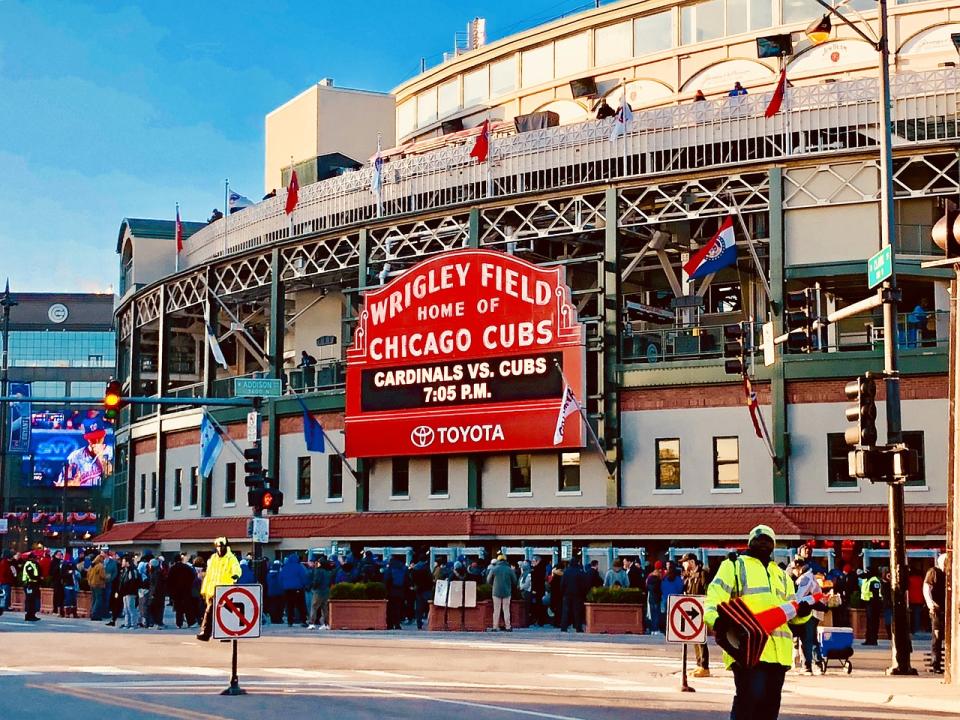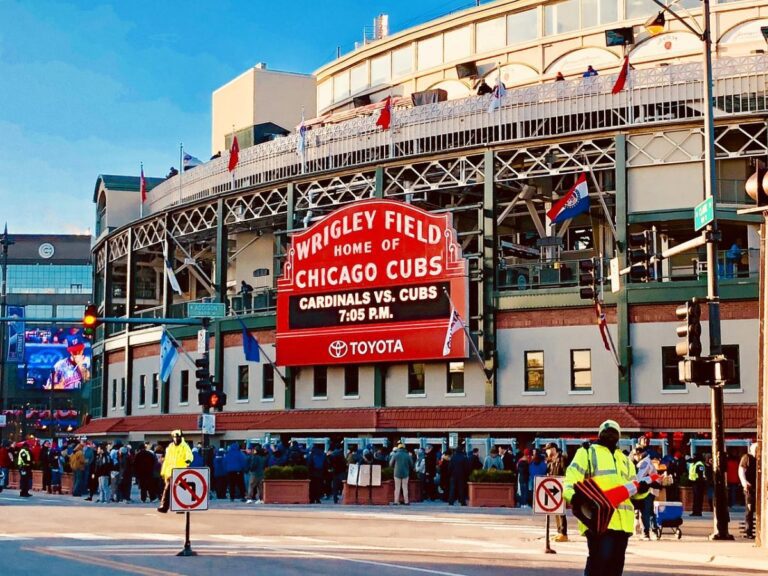In this piece, we'll take a look at the 20 fastest growing cities in the Midwest. For more cities, head to 5 Fastest Growing Cities in the Midwest.
The Midwest is one of America's four census regions. It includes the states east of Montana, Colorado and Wyoming, the states north of Arkansas, Oklahoma and Kentucky, and the states west of Pennsylvania and New York. Simply put, the “Midwest” is the region between the true US West and the eastern coastal and interior regions. The region consists of twelve states, which are Illinois, Indiana, Michigan, Ohio, Wisconsin, Iowa, Kansas, Nebraska, Minnesota, Missouri, North Dakota, and South Dakota.
The region is also quite different from what is commonly perceived of the US Globally, America is portrayed as an economic behemoth with a high cost of living and a stressful work environment. However, the Midwest is known for its laid-back lifestyle. In contrast to the iconic skylines of New York and the glitz and glamor of Los Angeles, the Midwest has vast farmlands and beautiful plains that are an equally important part of America's heritage, but are often overlooked in media coverage.
Plus, if farms aren't your thing, maybe the cost of living is. ONE cost of living training in the US from the Missouri Center for Economic Research and Information shows that states in the Midwest are consistently healthy green. In fact, of the twelve Midwestern states, only three—Wisconsin, Minnesota, and North Dakota—had a cost of living index that approached the standard value of 100. Additionally, the Midwest is also the only census region without an extremely high-cost state of living. To achieve this, the region competed with the South, as a large number of states in both have low costs of living, but in the end, the Midwest prevailed because Maryland and DC have extremely high costs of living.
Looking at America as a whole, seven of the top fifteen states with the lowest cost of living are in the Midwest and the rest are in the South. However, considering the fact that the South has more states than the Midwest, the fact that the latter still accounts for a large portion of the states with the lowest cost of living in America lends strong credence to the argument that the Midwest may be the cheapest region in America.
Not only does the Midwest have a low cost of living, but it is also critical to America's agricultural production. America is the the largest corn producer in the worldand 80% of U.S. corn production comes from this region according to the Midwest Row Crop Collaborative. This makes the region important not only to American prosperity but also to the global food supply chain. Considering that the Russian invasion of Ukraine has disrupted the global commodity supply chain that has contributed to high food costs, it can be argued that stability in the Midwest is also critical to the global economy.
In dollar terms, AgAmerica Lending estimates show the Midwest contributing more than 152 billion dollars in America's agricultural production each year. In this context, the corn belt region of Iowa, Montana, Illinois, Indiana and Ohio hold the largest share contributing $67.2 billion. At the same time, the region is also threatened by climate change, the Ministry of Agriculture believes. He shares that there are 127 million acres of agricultural land in the region, of which 75% is used for corn and soybean production. Appreciating that the entire agricultural sector was worth $76 billion in 2017, the Department of Agriculture believes that everything is at risk from climate change. Therefore, it is also reasonable to assume that an even higher $152 billion may be at risk from the effects of climate change.
Building on that and moving into the broader Midwest economy, the region has the third largest metropolitan area in terms of economy, namely Chicago. The city's gross domestic product was estimated to sit 720 billion dollars from 2023, making it one of the largest in the world. In fact, the only two largest metro economies in America are those of Los Angeles and New York, and Chicago is also a major financial center in America, home to many major commodities and futures exchanges, as well as the headquarters of the largest world's fast food chain McDonald's Corporation (NYSE:MCD). In addition, as of 2022, Chicago also ranks fourth in the number of Fortune 500 companies headquartered in the city, with 14 companies based there. The Midwest as a whole also has a vibrant startup economy, with estimates showing that 10% of all US-funded venture capital startups are based in the region. At the same time, not only does the region have a diverse economy—unlike Silicon Valley that focuses exclusively on technology—but the region's cumulative economic output is in $4.2 trillion.
Finally, America's largest investment company, Berkshire Hathaway Inc. (NYSE:BRK-B), is also based in the region. Berkshire is headquartered in Nebraska and its chairman, Mr. Warren Buffett, has his roots in Omaha and is often called the “Oracle of Omaha.”
With these details in mind, let's take a look at some of the fastest growing cities in the Midwest.


Pixabay/Public domain
Our Methodology
To compile our list of the fastest growing cities in the Midwest, we first used Census Bureau data to single out the Midwest's 35 largest cities. Next, the largest metropolitan areas with more than 150,000 households were selected and ranked according to inbound traffic rate – which measures the percentage of people who move to the areas out of the total of commuting and moving. Of these, the areas with the fastest rates of inbound movement are listed below as the 20 fastest growing cities in the Midwest.
The fastest growing cities in the Midwest
20. Milwaukee-Waukesha, Wisconsin
Inbound rate: 47.5%
The Milwaukee-Waukesha region is a part of Wisconsin, with Milwaukee as its main city. Milwaukee is the largest city in its state with more than half a million people living there. It is home to many large companies operating in the industrial equipment, automotive and financial services sectors.
19. Madison, Wisconsin
Inbound rate: 48%
Madison is the capital of the midwestern state of Wisconsin. The Madison metropolitan area, called Greater Madison, is home to nearly seven hundred thousand people. Since Madison is its state capital, it has a large government presence that also provides significant employment in the area. However, the city has a diversified economy, with companies ranging from biotechnology, energy and financial services.
18. Dayton, Ohio
Inbound rate: 48%
Dayton is one of the largest cities in Ohio and is part of the Greater Dayton metropolitan area, which has a population of over eight hundred thousand people. The city of Dayton itself is quite small with a population of less than two hundred thousand people. The city is known as a hub for the aerospace industry in America.
17. Youngstown-Warren-Boardman, Ohio
Inbound rate: 48.1%
Youngstown-Warren-Boardman is a metropolitan area in Ohio. It's called the Mahoning Valley and has a population of over half a million. The metro area's main city is Youngstown, and the area used to be a hub for the steel industry, but production has declined over the years.
16. Des Moines-West Des Moines, Iowa
Inbound rate: 48.4%
The Des Moines-West Des Moines metropolitan area is located in Iowa and consists of six counties. Its main city is Des Moines, which is also the capital and largest city in its state. The metropolitan area is home to approximately nine hundred thousand people and plays an important role in the American insurance industry.
15. St. Louis, Missouri/Illinois
Inbound rate: 48.4%
The St. Louis metropolitan area is located in Missouri and Illinois. It is home to most of Missouri's top ten Fortune 500 companies and other notable insurance and healthcare companies.
14. Toledo, Ohio
Inbound rate: 48.6%
Toledo is a city in Ohio with almost three hundred thousand people living within its borders. The city is part of the Toledo metropolitan area and accounts for more than half of the metro area's population.
13. Columbus, Ohio
Inbound rate: 49%
Columbus is the capital of Ohio and has a population of almost one million people. It is part of the Columbus metropolitan area, which adds another million people to the population.
12. Grand Rapids-Kentwood, Michigan
Inbound rate: 49.2%
The Grand Rapids-Kentwood metro area, also called the Grand Rapids metro area, is a metropolitan area in Michigan.
11. Detroit-Warren-Livonia, Michigan
Inbound rate: 49.4%
Detroit-Warren-Livonia is the second largest metropolitan area in the Midwest. Its main city is Detroit, which is the largest city in Michigan.
10. Chicago-Naperville-Joliet, Chicago
Inbound rate: 49.5%
Chicago-Naperville-Joliet is the Chicago metropolitan area. Its largest city is Chicago, the largest city in Illinois by population. Chicago-Naperville-Joliet is also the Midwest's largest metropolitan area.
9. Lansing-East Lansing, Michigan
Inbound rate: 49.7%
Lansing-East Lansing is a metropolitan area in Michigan. It houses just over half a million people.
8. Indianapolis-Carmel-Anderson, Indiana
Inbound rate: 50.3%
Indianapolis-Carmel-Anderson is located in Indiana and its central city is Indianapolis – its state capital.
7. Cleveland-Elyria, Ohio
Inbound rate: 50.3%
Cleveland-Elyria, or Greater Cleveland, is located in Ohio and one of the largest metro areas in Ohio.
6. Cincinnati, Ohio
Inbound rate: 50.7%
Greater Cincinnati is a tri-state metro area in Kentucky, Ohio, and Indiana.
Click to continue reading and view 5 Fastest Growing Cities in the Midwest.
Featured Articles:
Disclosure: None. 20 Fastest Growing Cities in the Midwest originally published on Insider Monkey.

